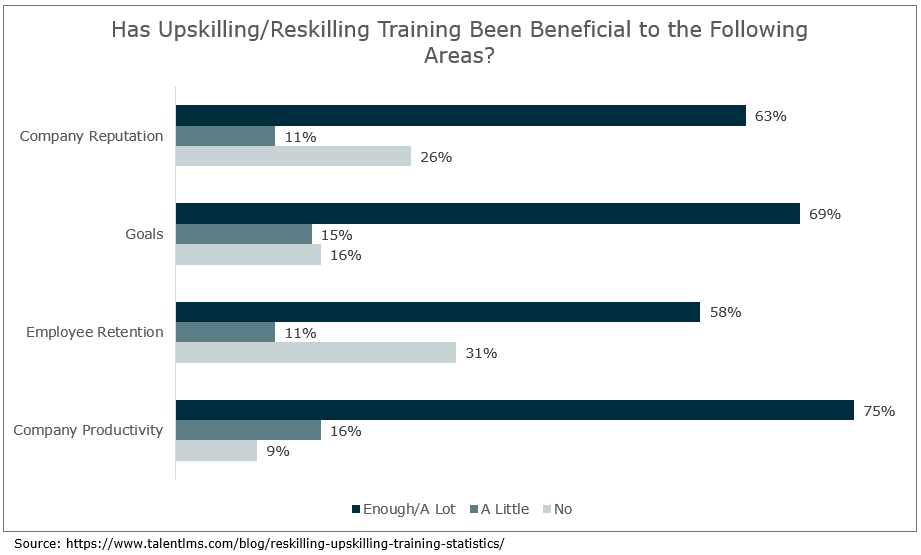Crafting a strategic talent acquisition strategy starts with robust talent management practices and an astute understanding of internal skill gaps. While talent acquisition remains a key priority, the conventional approach of solely seeking external talent to fill skill gaps may not be the most strategic path. Instead, a successful talent acquisition strategy must be anchored in robust talent management practices and a profound comprehension of the skill gaps inherent within the existing employee base.
Shifting from a talent acquisition mindset to a talent management mindset
Talent management encompasses a comprehensive viewpoint of an organization’s workforce. It includes recruitment and areas such as onboarding, employee development, performance evaluation, and succession planning. Historically, companies have grouped recruitment and talent management, often resorting to external hiring to address immediate skill gaps. However, this method can be counterproductive.
The transformation towards an integrated approach starts with the realization that current employees are an invaluable asset. Unveiling their latent potential can yield multiple advantages, including:
- Cost efficiency: External hires typically demand higher salaries, recruitment expenses, and onboarding investments. Nurturing and elevating internal talent offers a cost-effective alternative.
- Enhanced morale and engagement: When employees perceive growth prospects and avenues for development within the organization, their job satisfaction and commitment tend to increase.
- Accelerated onboarding and adaptation: Existing employees are already acclimated to the company’s culture, processes, and expectations, resulting in a shorter learning curve when transitioning to new roles.
- Deepened organizational insights: Internal employees possess an inherent understanding of the company’s operations, clientele, and industry dynamics. Tapping into this knowledge can catalyze improved decision-making and innovation.
- Augmented employee loyalty: By investing in employees’ advancement and skills enhancement, organizations manifest dedication to their growth, subsequently fostering loyalty and reducing turnover.
Tackling the skills gap
A pivotal facet of successful talent management lies in recognizing and addressing the skills gap within the organization. Where do you see the disparity between an employee’s current skill set and the competencies required for optimal performance? Bridging these gaps can lead to heightened efficiency, superior performance, and a more adept workforce. Furthermore, by 2030, the talent shortage and skills gap in the U.S. alone is expected to contribute to unrealized revenue of $162 billion.
You can address these gaps by doing the following:
- Conduct a comprehensive skills gap analysis: This entails meticulously evaluating employees’ skills, proficiencies, and capabilities vis-à-vis the requisites of their current or potential future positions. This analysis serves as a compass, guiding development initiatives.
- Alignment with organizational objectives: Skills gap analysis must be tightly aligned with the company’s strategic goals. This ensures that skill development endeavors are focused on areas that would exert the maximum impact on business success.
- Tailored skills development programs: Once gaps are discerned, organizations can design personalized training regimens, workshops, mentorship programs, and other learning interventions to bridge these gaps effectively.
- Cultivation of a learning culture: Nurturing an environment that champions continuous learning and skills enhancement can foster an adaptable workforce primed to tackle novel challenges.
Research shows that addressing skill gaps can benefit firms in several strategic areas:

Blend talent acquisition and management
By adopting a comprehensive approach to attracting, developing, and retaining talent, organizations can gain a competitive edge and adapt more effectively to the changing demands of the business landscape. The intersection of talent management and acquisition is where a potent synergy emerges. The interplay of these facets offers a myriad of benefits:
- Informed external recruitment: Armed with insights about internal skill gaps, organizations can make decisions about which skills to source externally. This diminishes the risk of redundant hires and ensures that candidates align optimally with organizational requirements.
- Strategic succession planning: Talent management identifies high-potential employees who can be nurtured for leadership roles. Integrating this knowledge with external hires fortifies the pipeline of future leaders.
- Customized development trajectories: Empowered with insight into skill gaps, organizations can chart tailored developmental pathways for current employees, enabling them to acquire the proficiencies vital for advancement.
- Preservation of institutional wisdom: Fostering internal development preserves the invaluable institutional knowledge that often dissipates when key employees leave.
Cultivating internal talent and fostering a culture of continuous learning allows organizations to bridge significant gaps, creating a workforce poised to drive innovation, embrace change, and make substantial contributions to the company’s triumph. Combining this strategy with astutely targeted external recruitment paves the way for an effective and agile approach to talent acquisition success. The symbiotic relationship between talent management and acquisition is the keystone of an organization’s sustained growth and prosperity.
